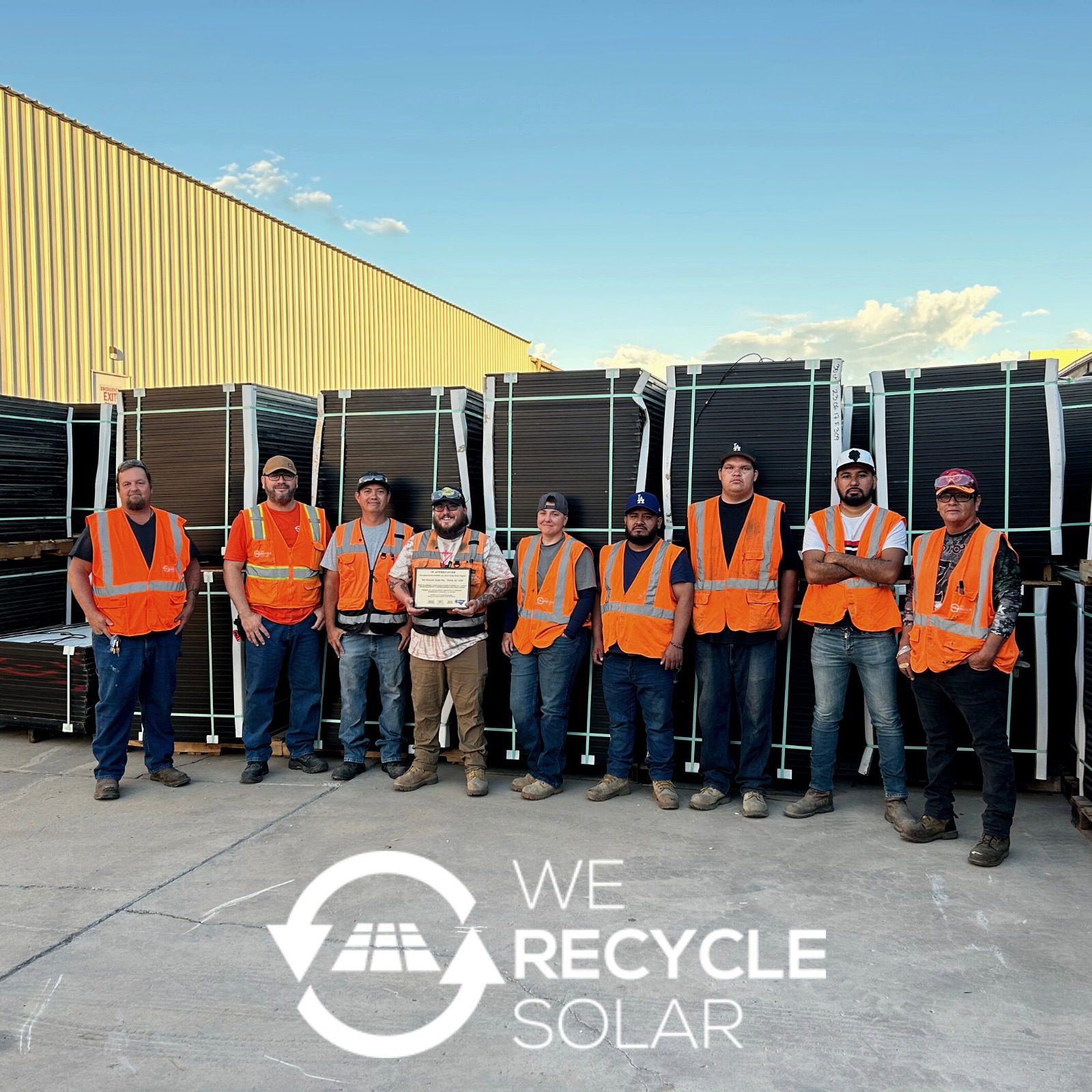(Bloomberg) —
Inside a noisy industrial plant on the outskirts of Yuma, Arizona, there’s a machine that smashes old solar panels into bits. It can handle 10 panels a minute, as many as 7,500 a day, extracting bits of copper and silver and aluminum, and pulverizing most of the rest into a gritty powder.
It’s the biggest US site for recycling old photovoltaic panels, according to We Recycle Solar Inc., a four-year-old startup that owns the plant. The company sees a growing business opportunity handling panels that would otherwise end up in a landfill. With potentially billions of panels needing disposal in the coming years, the market for recycled materials may reach $2.7 billion a year by 2030, and $80 billion by 2050, according to a report last year from Rystad Energy.
We Recycle Solar is at the forefront of this growing industry. More than 1 terrawatt of solar power has been installed worldwide, and researchers say that figure needs to reach 75 terawatts by 2050 to fight climate change. Every one that’s installed will eventually need to be disposed, said Adam Saghei, the company’s chief executive officer. There are thousands of old panels stacked up at the Yuma facility, and some days as many as 10 trucks drive through the gates, each loaded with 400 to 800 more. While there’s a huge global push to install solar panels, he said the issue of what do with them when the panels are eventually removed has received scant attention.
“It’s a great business model. We’re not going to run out of supply,” said Saghei. The company has already processed more than 500,000 panels, and he expects that figure to reach 1 million by yearend. “This problem is getting bigger and bigger, every year.”
All over the world, people are trying to figure out how to handle waste from the energy transition. Solar panels typically have a lifespan of 25 to 30 years, though many are replaced sooner. In the US, installations started to accelerate after the Energy Department introduced a key tax incentive in 2005, so the panels that are being removed from power systems now are just a trickle, and will soon become a flood, said Meng Tao, an engineering professor at Arizona State University.
”We’re seeing the first wave of waste now,” said Tao, who’s also part of ASU’s Global Institute of Sustainability and Innovation and has studied the looming issue of photovoltaic disposal. “The amount will be so huge.”
He estimates that as much as 90% of the panels that are coming down now end up in landfills, which is by far the cheapest option.
Tossing old panels in the dump costs about 50 cents to $1.80 each, according to the Electric Power Research Institute, an independent research group. Taking the time and effort to sort through them, bash them into pieces and then collect any materials with value can cost anywhere from $10 to $50 per panel.
We Recycle Solar has a multi-pronged strategy. Customers typically pay the company to haul away old panels. If the panels still work, We Recycle Solar resells them. If not, they get bashed to pieces and the raw materials can be sold. In both cases, the customers get a cut of the proceeds. Saghei won’t share the company’s revenue but said it’s is profitable.
We Recycle Solar is able to find new homes for about 60% of the panels it processes, and can sell them for as much as $160, said Saghei. That’s much more than the $5 to $7 he can get for the basic commodities he typically gets from a pulverized panel, though some older ones may yield as much as $15 because the industry used to require more silver in its products. He’s shipped used panels to about a half-dozen countries so far including Turkey, Panama and Morocco, and said the potential secondary market is huge, especially in developing nations.
“The longer we can reuse these products, the better,” said Evelyn Butler, vice president of technical services at the Solar Energy Industries Association trade group. “We have a huge amount of waste on our hands that we don’t have a way to manage.”
Recycling is starting to take off but is unlikely to gain significant traction without policy mandates, said Butler. There are no federal regulations covering disposal; Washington state has a policy that mandates environmentally sound disposal practices for panels starting in 2025, and several other states are looking at the issue. But until there’s more legislative push, owners are more likely to toss old panels in the dump.
At the Yuma recycling site, workers sort through every single panel to identify the ones that can be resold and the ones that are only valuable for their materials. Those are placed onto a belt and fed into a device with three dozen hammers that shatter them into fragments. The pieces go through a series of machines where they’re sorted and sifted, crumpled and crushed, until the basic materials have been separated and are ready to be sold.
About 15% of each panel’s weight comes from aluminum, mostly the frame, and 70% is glass. Some weeks the company might sell about 50,000 pounds of aluminum as scrap metal. Copper and silver are more valuable, but there’s not as much of it. Once through the machine, one of the final products is a gritty powder, mostly glass, that can be sold for use as a sandblasting material.
We Recycle Solar is currently seeking funding to improve its panel-smashing system and to expand. Constructing the Yuma site cost in the single-digit millions and the company would like to raise enough to build four more across the US in the next three to five years. Saghei anticipates surging demand for his recycling services. Millions of panels will require disposal in the coming years and he wants to be ready for that impending boom.
“We want all of it,” he said.
To contact the author of this story:
Will Wade in New York at wwade4@bloomberg.net
© 2023 Bloomberg L.P.





